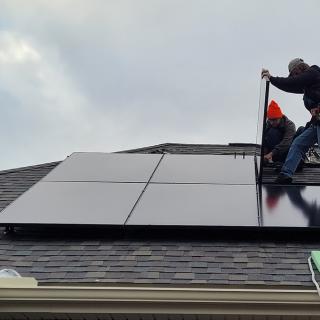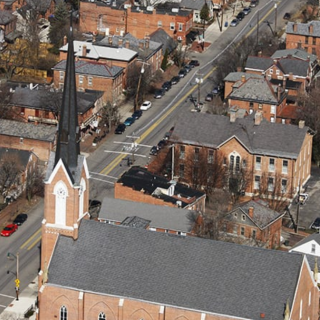Advertisement
Trump Tariffs
It's becoming increasingly clear that the new Trump tariffs will significantly impact the solar industry, adding additional tariffs on top of the already 50 percent level that are assessed against many of the leading solar panel exporting countries.
Preliminary calculations by solar.com anticipate a net 10 cents per watt average increase to the cost of solar hardware. There's currently a significant inventory of solar panels that have been warehoused in anticipation of these tariffs, so the impact on the industry may not be immediately felt.
According to the Solar Energy Industries Association, there's currently about 50 gigawatts of solar panel manufacturing capacity here in the US, which is theoretically enough to meet domestic demand for solar panels.
However, the subcomponents of those panels, such as the silicon and the metal for the framing, will be subject to the Trump tariffs.
It's worth noting that solar modules make up about less than 20 percent of the total cost of installing a home solar system, so even a slight increase on the component costs may not have a dramatic effect on the overall cost of installing a system.
FEMA Proposal will Increase Construction Cost of Essential Facilities
There is a FEMA proposal to change the International Building Code (IBC) so that solar projects meet the Risk Category 4 requirements, which are the most stringent category within their scale. This time it's aimed at battery energy storage systems or BESS systems.
At the end of April, the International Code Council will be meeting, and this particular proposal is on the agenda. A risk category is reserved for essential facilities. These are normally considered like hospitals, fire stations, emergency services, where continuous operation of these services is critical before, during and after an emergency.
Essential Facilities require greater flood, seismic, wind and tornado resistance, as well as need to be constructed to resist fires in a substantial way, such as with firewalls and sprinkler systems added.
Currently, approximately 95 percent of all large-scale solar facilities are designed and must meet Structural Category 4 levels, which is the lowest level.
This proposal, according to industry experts, will cause a dramatic increase in the cost of constructing these facilities.
First Solar Made in USA
First Solar, the nation's largest solar manufacturer saw its stock prices shoot up to more than $140 per share when the NASDAQ opened last Thursday morning.
This was happening while all other stock prices were falling dramatically due to the Trump tariffs.
The stock valuation eventually settled in at around $137 per share, but they did increase about 5 percent on that day.
First Solar, which is headquartered in Tempe, Arizona, manufactures cadmium telluride thin film panels.
They do not use polysilicon. Polysilicon is a product that is imported primarily from China, which is now subject to the 54 percent additional tariffs.
First Solar is highly sought after by utility installers who are trying to also take advantage of the domestically produced provision, the 10 percent tax credit, from the Inflation Reduction Act.
First Solar operates three facilities in Ohio.
Last September they opened a $1.1 billion plant in Alabama and they're in the process of constructing a 3.5 gigawatt system in Louisiana, which is expected to come online next year.
This price increase comes on the heels of a significant price decline in First Solar stock, falling from its high of $277 per share in May of 2024.
Electric Prices Rising
The Bureau of Labor Statistics recently reported that electric prices rose by 3.6 percent over the last 12 months, outstripping the broader inflation rate of 3.2 percent.
Contributing causes to the increase consist primarily due to transmission cost and volatile fuel costs. Also federal policies, aimed at electrifying end uses and reducing emissions, aging infrastructure and rising grid costs, increased demand and interconnection backlogs could lead to even higher prices.
The conservative think tank American Enterprise Institute has said that electric prices are now reaching levels unmatched since the 1990s when adjusted for inflation.
The average electrical rate in the US was 16.54 cents per kilowatt hour in February, according to data from Electric Choice.
Louisiana has the cheapest electrical rate on average, with residents paying around 11.23 cents per kilowatt hour. Hawaii is at the high end of the spectrum.
American households use around 899 kilowatt hours of electricity each month, which means that on average, Hawaii residents pay the high end of 41.27 cents per kilowatt hour or an average electric bill of $371.01 per month



